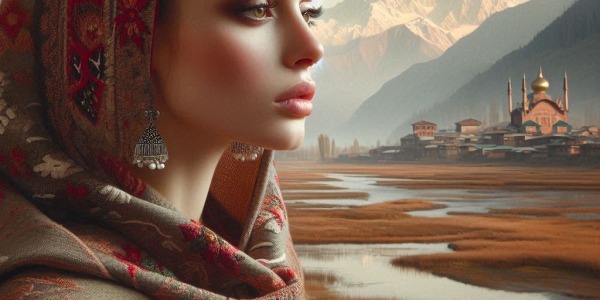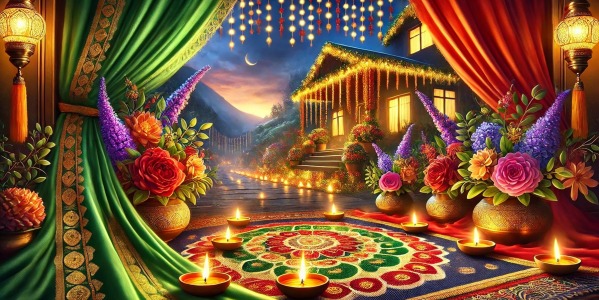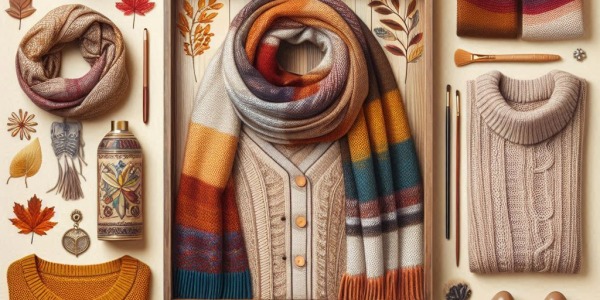- Pashmeen
- Style Guide
- 0 likes
- 79 views

Denim & Drapes: Style Simplified
#Denim & Drapes: Style Simplified This blog post provides practical advice on how to enhance denim outfits using scarves, shawls, and stoles. It differentiates between these accessories and offers styling tips for casual and elegant looks, considering seasonal variations and various draping techniques. It emphasizes the versatility of denim as a backdrop for colorful and patterned accessories. The post also highlights the Pashmeen brand's collection of high-quality drapes and encourages readers to explore their range for stylish denim pairings.
Read more
Craftsmanship, Comfort, and Elegance: Discover the Warmth of Indian Kashmiri Crochet Embroidered Scarves
Explore the timeless beauty of Indian Kashmiri wool scarves adorned with intricate crochet hook embroidery. Learn about their history, craftsmanship, and how to style these exquisite pieces.
Read more
Diwali 2024 Fashion Trends with Pashmeen: Elevate Your Festive Look
Celebrate Diwali with Pashmeen: Elevate Your Festive Fashion As Diwali approaches, it's the perfect time to refresh your wardrobe with elegant accessories from Pashmeen. Our collection of luxurious scarves, stoles, and shawls will enhance your festive looks, combining traditional craftsmanship with modern design. Key Trends: Vibrant Colors: Embrace rich jewel tones like emerald green and ruby red for a festive touch. Statement Accessories: Oversized scarves with intricate designs can elevate any outfit, from sarees to lehengas. Sustainable Choices: Opt for ethically sourced pashmina to enjoy luxury while being environmentally conscious. Mix and Match Styles: Pair traditional attire with modern pieces for a unique look. Comfort Meets Style: Lightweight stoles are perfect for long celebrations while keeping you stylish. Explore our exclusive Diwali collection and find the perfect accessory to make this festive season unforgettable!
Read moreDelve into the fascinating history of pashmina embroidery. Explore the origins, techniques, and significance of this exquisite craft. From intricate designs to cultural symbolism, learn how pashmina embroidery has evolved through the ages. Discover the beauty and artistry behind this cherished tradition.

Pashmina, the soft and luxurious fabric known for its warmth and elegance, is further enhanced by the art of embroidery. Pashmina embroidery is a centuries-old craft that holds deep cultural and historical significance. In this article, we will take you on a journey through time as we uncover the captivating history of pashmina embroidery. From its origins in the Kashmir region to the intricate designs and skilled craftsmanship, we will explore the beauty and cultural richness behind this cherished tradition.
The Origins of Pashmina Embroidery
1. The Kashmir Connection: The art of pashmina embroidery finds its roots in the scenic valley of Kashmir, nestled in the Himalayas. The region's rich cultural heritage and the availability of fine pashmina wool make it the perfect breeding ground for this exquisite craft. Kashmiri artisans have mastered the art of embroidery over centuries, passing down their skills from one generation to the next.
2. Influence of Mughal Era: Pashmina embroidery flourished during the Mughal era in the 16th century. The Mughal emperors, known for their patronage of arts and crafts, greatly influenced the development and refinement of embroidery techniques. Intricate designs, delicate threadwork, and rich colors became hallmarks of Mughal-inspired pashmina embroidery.
Techniques and Styles of Pashmina Embroidery
1. Chain Stitch: Chain stitch is one of the primary techniques used in pashmina embroidery. This stitch creates a chain-like effect, forming intricate patterns and motifs on the fabric. The use of vibrant colored threads adds depth and beauty to the embroidery.
2. Aari Work: Aari work is another popular technique employed in pashmina embroidery. It involves using a special hooked needle called an "aari" to create fine, detailed patterns. This technique allows for precision and intricacy, resulting in stunning designs that adorn pashmina shawls and garments.
3. Jamawar: Jamawar is a distinct style of pashmina embroidery that originated in Kashmir. It features a combination of intricate weaving and embroidery, resulting in elaborate and symmetrical designs. Jamawar shawls are highly sought after for their exquisite craftsmanship and timeless elegance.
Cultural Significance of Pashmina Embroidery
1. Heritage and Tradition: Pashmina embroidery represents the cultural heritage and traditional craftsmanship of the Kashmir region. It reflects the skills passed down through generations, preserving the artistry and techniques that make each piece a work of art.
2. Symbolism and Stories: Pashmina embroidery often incorporates symbolic motifs that tell stories or convey cultural significance. These motifs can depict elements from nature, historical events, or religious beliefs. Each stitch carries meaning and adds depth to the narrative of the embroidered piece.
Frequently Asked Questions (FAQs)
Q1: Is pashmina embroidery done by hand or machine?
A1: Pashmina embroidery is primarily done by hand. The intricate designs and delicate nature of pashmina fabric require the skill and precision of artisanal craftsmanship. Hand embroidery ensures the highest level of detail and quality.
Q2: Can pashmina embroidery be customized?
A2: Yes, pashmina embroidery can be customized according to personal preferences. Artisans can create bespoke designs based on individual requests, allowing for unique and personalized pieces.
Q3: Is pashmina embroidery limited to shawls and garments?
A3: While pashmina embroidery is commonly seen on shawls and garments, it can also be found on other accessories such as scarves, stoles, and even home decor items like cushion covers and wall hangings.
Conclusion
Pashmina embroidery is an art form that weaves together the threads of history, culture, and skilled craftsmanship. Its origins in the Kashmir region and its influence from the Mughal era have shaped it into the exquisite craft we admire today. From the intricate chain stitches to the precision of aari work, pashmina embroidery showcases the dedication and talent of Kashmiri artisans. Its cultural significance and symbolic motifs make each piece a testament to the rich heritage it represents. As you wrap yourself in the warmth and beauty of a pashmina adorned with embroidery, you become part of a timeless tradition that connects the past with the present.


